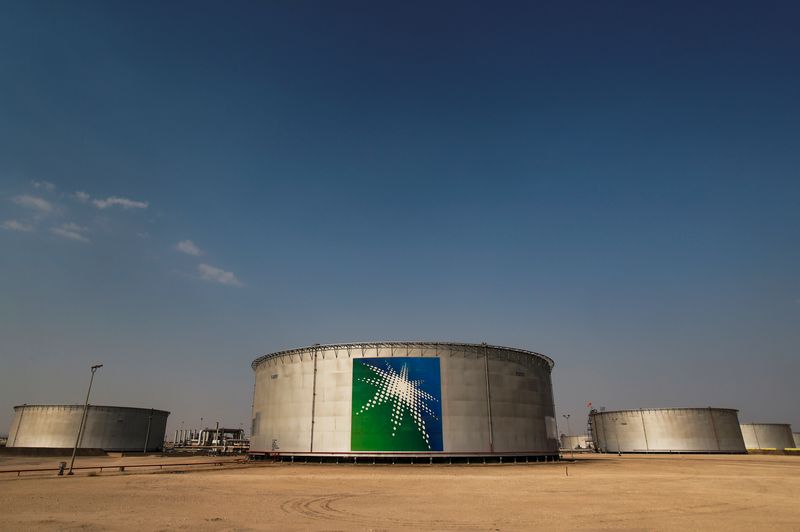By Yousef Saba and Maha El Dahan
DUBAI (Reuters) - Saudi state oil giant Aramco (TADAWUL:2222) on Monday announced an additional near $10 billion dividend, most of which will go to the government, the first of several extra payouts on top of its expected $153 billion base dividend for 2022 and 2023.
Aramco will begin paying performance-linked dividends with a $9.87 billion payout in the third quarter, based on its full-year 2022 and first-half 2023 results, it said.
That is on top of a base dividend of about $19.5 billion for the second quarter, in line with the first quarter, which is paid regardless of performance - uncommon among listed companies.
The additional dividend, announced last quarter, will be paid over six quarters and is calculated based on 70% of Aramco's free cash flow for 2022 and 2023, net of the base dividend and other amounts.
Aramco had said the performance-linked dividend would be equivalent to 50-70% of free cash flow.
The group's shares, which have risen about 12% this year to 32.65 riyals, were up 1.1% at 1420 GMT on Monday.
The Saudi state remains overwhelmingly Aramco's biggest shareholder. The government directly holds 90.19%, the sovereign Public Investment Fund (PIF), 4% and PIF subsidiary Sanabil another 4%, according to Refinitiv data.
Saudi Arabia posted a budget deficit of 8.2 billion riyals in the first half of 2023, raising the possibility of a full-year deficit after it notched its first surplus in nearly a decade last year.
The PIF, which sometimes receives government injections, spent 120 billion riyals domestically last year as it pushed to deliver an ambitious economic agenda to wean the economy off oil by building new industries.
The plan, known as Vision 2030 and the brainchild of Crown Prince Mohammed bin Salman, the kingdom's de facto ruler, includes building a $500 billion car-free city in the desert.
Aramco's net profit fell to 112.81 billion riyals ($30.07 billion) for the quarter to June 30, down 38% from 181.64 billion riyals a year earlier, amid weaker oil prices and thinner refining and chemicals margins.
A company-provided median estimate from 15 analysts had forecast $29.8 billion in profit.
Most oil majors reported strong or record-breaking earnings in the second quarter after Western sanctions against major exporter Russia squeezed an already undersupplied global market, causing a surge in crude and natural gas prices.
Brent has dropped from $113 a barrel a year ago, hit by concerns over an economic slowdown and ample supplies. Moscow and Riyadh have been trying to prop up prices.
Oil futures are now at their highest since mid-April after Saudi Arabia and Russia pledged last week to keep supplies down for another month to tighten global markets further. Brent was trading at just above $85 a barrel on Monday.
OPEC+, which groups the de facto Saudi-led Organization of the Petroleum Exporting Countries and allies led by Russia, pumps around 40% of the world's crude. The group has been limiting supply since late last year to bolster the market.
"At Aramco, our mid to long-term view remains unchanged. With a recovery anticipated in the broader global economy, along with increased activity in the aviation sector, ongoing investments in energy projects will be necessary to safeguard energy security," CEO Amin Nasser said in a statement.

The firm still sees capital expenditure at between $45 billion and $55 billion this year, Nasser said on a media call.
He expected Chinese demand to continue growing and said its chemicals sector was growing at a substantial pace, adding Aramco has a number of investments there in the pipeline and would announce them in due course.